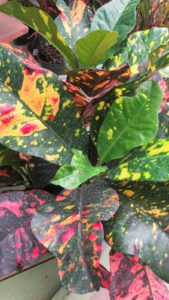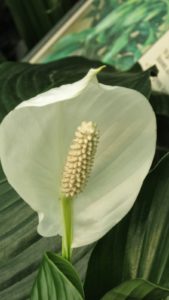
Too much? Too little?
At Tagawas, our Houseplant Department is always ready to help you choose the best plant for home or office. One of the first questions that Dee (our houseplant queen) or her staff will ask you is about the light your new plant will be getting..
Feel free to ask for one of Dee’s “Houseplant Instruction” tip sheets. Here’s how she describes the different types of light.
- High light – full direct sunlight for three to six hours
- Bright light – indirect sunlight for six to eight hours
- Medium light – full morning sun for two to four hours or bright indirect light for four to six hours.
- Low light – diffused indirect sunlight for more than three to four hours
- No light – diffused indirect light for three hours or less
 Save the labels!
Save the labels!
I always urge people to save the labels and descriptive tags that come with their plants, whether they plan to grow them indoors or out. There’s a library of information on those tags, not the least of which is the name of the plant. Knowing specifically which plant you have can be a huge help in diagnosing problems.
The labels will also tell you how much light a plant requires.
Plants that don’t get enough light will tend to stretch…. to get leggy and unattractive. They’re reaching out, struggling to get more light. Until their lighting situation improves, those plants can’t thrive.
Plants that get too much light can show signs of sunburn… light brown papery patches that will never “heal.”
 Want flowers?
Want flowers?
With a very few exceptions, houseplants that flower need higher light conditions before they can produce their blossoms. One big exception, a plant well worth having, is a “Peace Lily.” It’s happy with moderate to lower-light conditions, and will give you elegant milky-white flowers without ever getting any direct sun.
A lot of other flowering plants will do very well with a few hours of bright, morning sun. Sunlight early in the day can be enough to feed many plants flowering needs without burning their leaves.
Be careful putting plants in a south- or west-facing window when the sunlight can be especially intense, especially in the winter.
Dee’s tip sheet on “Houseplant Instructions” includes lists of dozens of plants that are suitable for differing light conditions from high light to no light.
Growing the right houseplants in the right place is easy, with a little help from Tagawa’s!
 Save the labels!
Save the labels! Want flowers?
Want flowers?


